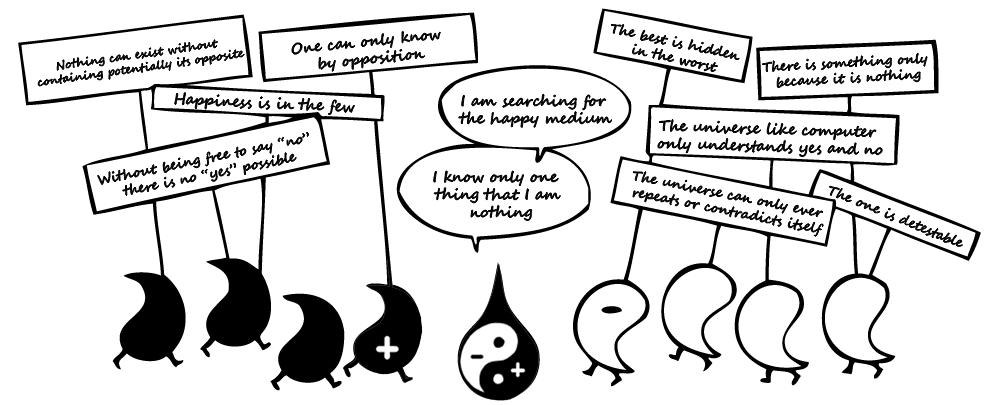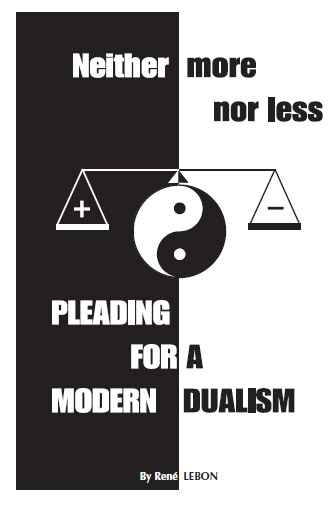Anaximander, circa 555 BC

The only text that is incontestably attributed to this philosopher states, according to a translation done by Nietzsche, as rendered in English by Kirk & Raven: “And the source of coming-to-be for existing things is that into which destruction, too, happens according to necessity; for they pay penalty and retribution to each other for their injustice according to the assessment of time.”
Here is another translation from the Internet Encyclopedia of Philosophy: “Whence things have their origin, thence also their destruction happens. As is the order of things; for they execute the sentence upon one another – the condemnation for the crime – in conformity with the ordinance of Time.”
And then there is this one: “From which there is, for beings, generation, and it is in that too that destruction occurs, according to what must be; because they render justice unto themselves and both repair their mutual injustice, in accordance with the allocation of time.”
The Apeiron is the undefined element from which everything comes and to which everything returns
(M. Conche: Anaximandre, 1991)
This text may be interpreted as follows: everything that is born is, of necessity, condemned to perish within a given time. For these things which, inevitably, are born and die after a certain lifespan, Anaximandre spoke of expiation and justice. Birth is therefore a thing that has to be expiated by rendering justice to it. We think that justice must be considered in the sense of an equilibrium or a state or rest. In other words, birth is the imbalancing of something. The thing born has only one purpose, which is to reattain the state of rest that it lost. This effort to return to equity concretises the time spent existing.
Prior to Anaximander, philosophers endeavoured to explain the world based on the elements which seemed to them to be natural, such as water, air, earth and fire, without getting the Gods involved. Anaximander was the first one to step back from any material or divine explanation by bringing into play a purely abstract element that he called the “apeiron” and which may be translated as meaning infinite, transfinite, unlimited, indeterminate, immortal, imperishable, non-engendered, or incorruptible. From this primordial element, through successive divisions of the apeiron, opposites are born which, through reuniting, return to death in the primordial element.
Outside of the apeiron, the elements are in perpetual conflict, with hot confronting cold, dry confronting wet, and with this conflict being governed by the apeiron, which calls on each assailant to return to its natural borders.
Here is another interpretation, by the astrophysicist Michel Cassé, in Les Théories du Ciel page 56: “The apeiron is the infinite or undefined, the unorganised nothingness that contains all things with power and via which anything can access being and its fate through discriminating opposing couples. Likewise, it is to it that everything returns once the cycle is completed.”
Here too, what is involved is a cycle and therefore a field, in the scientific sense of the word. The field, along with its pulses, is born out of something flat and indeterminate. Whenever a pulse distances itself from this, this pulse has to try and return to its original situation which it exceeds in its effort to do so, thereby producing an opposite pulse. This is the nature of the oscillating field around this apeiron. The more it distances itself from it, the more it makes an effort to return to it, with the effort being such that it exceeds to the extent of reaching the inverse position. From this position, it seeks once again to rejoin it, but in doing so it exceeds once again, finding itself in the inverse position and returning to the starting point. This is how the field “expiates the injustice”. Between two identical positions, there is space, embodied by the wavelength, and time, represented by the period, which is the order of that time.
Anaximander perfectly understood the superposition of cycles that the Universe represents, without having the conceptual tools to express it. The apeiron is the state of rest that the whole Universe aspires to through the annihilation of opposites.
Modern dualism is entirely in phase with Anaximander’s view of things. The ancient Chinese doctrine simply called “Tao” what Anaximandre referred to as the Apeiron, but ultimately, both used a different word to symbolise the same semantic content.






